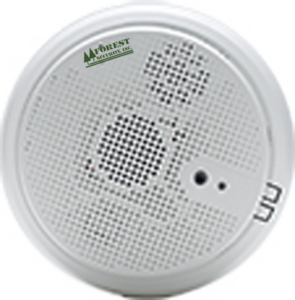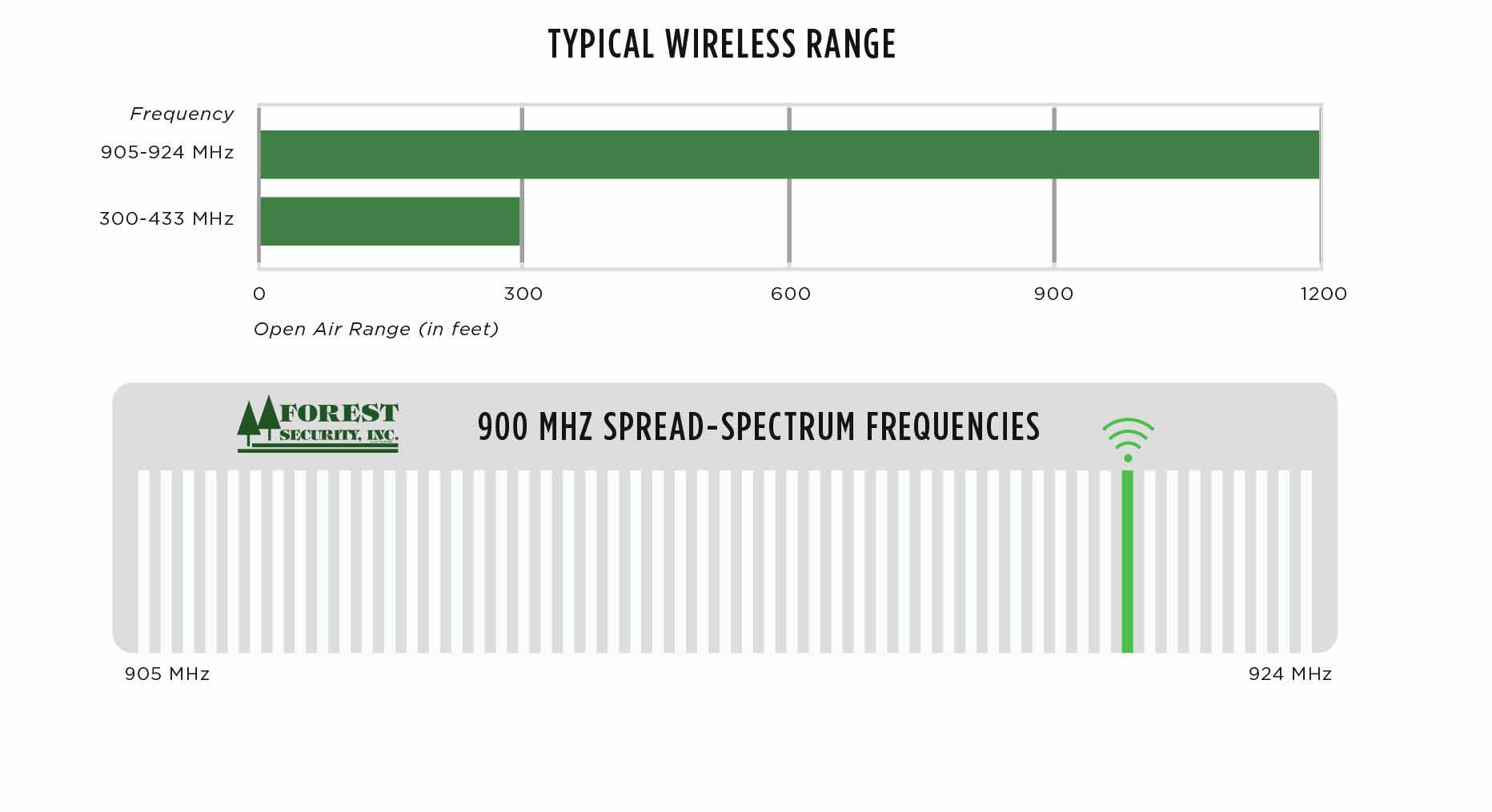Protection Against Smoke, Carbon Monoxide, and Freezing Temperatures With One Device

Wireless Smoke/CO/Low Temp Combo Detector With Synchronized Sounder
Installing smoke and carbon monoxide (CO) detectors saves lives. Low temperature monitoring products protects property. Now, you can have all three types of protection with just one device.
When the Smoke/Co/Lo Temp goes into alarm, you will know immediately which type of emergency it is. That’s because it has sensing technologies that work together to sound distinct alarms for both smoke and CO. In addition to a built-in sounder, a multi-lingual voice also alerts you of the alarm and maintenance requirements. The voice also announces what action they should take.
Whole-House Protection
Forest’s Smoke/Co/Lo Temp Device works hand-in-hand with our Smoke Detectors. If one unit detects danger and begins to sound, all life safety devices across the home will sound. This cadence synchronization on the system can be a life-saving tool in providing whole-house protection.
Multi-Colored LED Provides Visual Alert
For added protection, it also has a multi-color LED indicator. RED indicates smoke detection and low temperature, and BLUE indicates CO. Hearing-impaired individuals will know at a glance if there is an emergency. Other LED indicators include:
- GREEN = Supervisory indication; blinks during power on, reset and during normal operation
- AMBER = Signal maintenance and trouble events
Is It a Real Fire or Just Burning Toast?
Because it uses multiple sensors, it can distinguish between a real fire and a nuisance issue. While an infrared (IR) flame sensor measures ambient light levels and flame signatures, the thermal detection monitors temperature.
Detecting real emergencies and alerting residents and their monitoring centers is what this UL-listed device does best. For customers with second homes or unheated basements, its low-temperature sensor can be especially beneficial. To protect pipes from freezing and bursting, this device sends an alarm to the panel if the temperature inside drops below 40 degrees for 10 minutes.
With all Forest’s Two-Way Wireless, you can rest easy, knowing you have the most reliable supervision day and night.

Forest Two-Way Transmitters
Two Way transmitters offer greater security by operating in the 905-924 MHz spectrum band offer numerous advantages over other products:
- Longer range due to less strict regulatory requirements for the 905-924 MHz frequency band in comparison with the 300-433 MHz band
- Support for more frequent sensor check-ins, increasing system reliability
- Spread-spectrum technology for greater reliability and protection from jamming
- Two-way communications for greater reliability
- Greater range with support for up to eight repeaters⋅ Shorter wavelengths are less likely to be blocked by new walls or other changes made to a protected area⋅UL approved for commercial fire installations
- Longer battery life for lower maintenance costs
900 MHZ SPREAD-SPECTRUM TECHNOLOGY
Forest’s wireless communication employs 900 MHz frequency-hopping spread-spectrum to ensure clear and accurate signal transmissions without interference in practically any environment. The spread- spectrum technology enables the system to use numerous channels within the 905-925 MHz band and to dynamically hop from frequency to frequency.
By using spread-spectrum technology, this virtually ensures that our wireless system cannot be defeated by jamming. With non-spread-spectrum systems that operate in a narrow frequency band, an intruder can use a wireless device to flood the area with transmissions at the same frequency used by the alarm system, thereby preventing alarm signals from reaching the receiver.
Every 32 milliseconds, Forest’s Two-Way Wireless hops to a new frequency across 53 frequencies. The order is random and determined by the house code of the panel.Although spread-spectrum technology uses frequencies that other systems use, and it will see interference from other systems, it is designed to overcome that interference inherently.
This is one of the main advantages of spread-spectrum wireless.If the device and receiver hop to a different channel and encounter a channel that has interference, it simply moves on, and the data acknowledgment will not be received, thus requiring the panel or sensor to resend that signal. This trying and re-sending will automatically occur until the message is sent and acknowledged. This self-healing system is very reliable.

